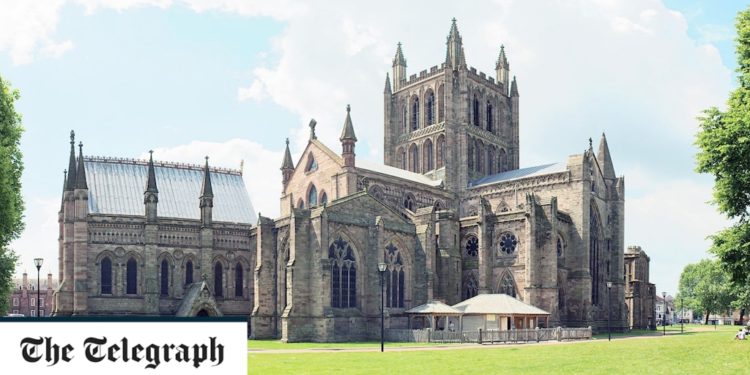Crucially, the dispatch was drafted a full 14 years before Fisher put quill to parchment, making the late bishop possibly the true progenitor of that most festive of greetings.
The letter found by archivist Elizabeth Semper O’Keefe, pictured below
The use of the term reflected its religious origins and its rather more formal and spiritual origins.
“I think it is a lovely turn of phrase,” said Ms Semper O’Keefe, “it is interesting to see how it’s developed from that very kind of prayerful invoking of God into our much more casual use, which we write a million times in our Christmas cards.”
The archivist insisted that it was not a matter of competition between the two cathedrals, but instead further evidence of how festive language was changing in the 16th Century.
The carol, We Wish You A Merry Christmas, is also thought to have originated around the same time, said Ms Semper O’Keefe, showing its growing popularity compared to older terms such as “the nativity of Our Lord”.
“Both references are survivals of the early use of that phrase, and it’s obviously starting to become commonly used in such a way that both bishops are putting it within their day-to-day administrative letters and it’s just chance really as to which letters survive.”
The word ‘merry’, meanwhile, retained a less alcohol-sodden meaning at the time. Crucially, unlike the greeting “Happy Christmas” it is an invocation to an agreeable and enjoyable time.
Despite its merry opening, the letter from Booth is in fact about prisoners in the Bishop’s Palace.
Penance and misdemeanours
It deals with penance and the various misdemeanours that landed locals in the prison, including a priest who appeared to have broken his vows and a man who was forbidden from seeing his aunt outside church for reasons that remain a mystery.
“It really is a workaday letter,” said Ms Semper O’Keefe.
While Booth would die in post in 1535, Fisher met a much less happy fate when he was executed that same year on orders of Henry VIII. Fisher had refused to recognise the king as the supreme head of the Church of England. He was made a saint in 1935 by Pope Pius XI.
The cathedral’s event, Christmas Capers, takes place on Monday and involves small group tours of the cathedral exploring a series of Christmas-linked tales.
Credit: Source link




